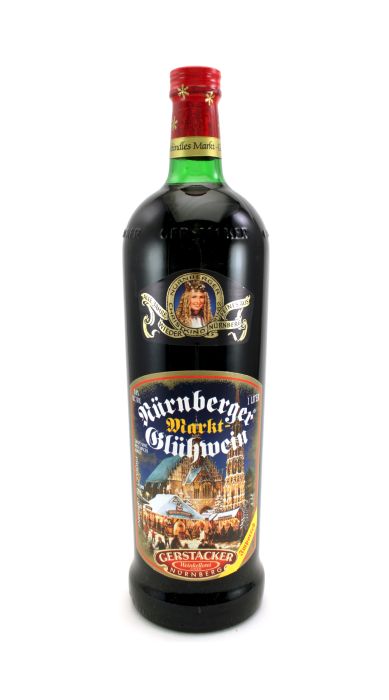Need Help Finding the right wine?
Your personal wine consultant will assist you with buying, managing your collection, investing in wine, entertaining and more.
By continuing, you agree to our privacy policy, consent to cookies, and confirm you are 21 or older.
I have read and agree to the Privacy Policy and Terms of Service.
YOU MUST BE 21 OR OLDER TO CONTINUE
NYC, Long Island and The Hamptons Receive Free Delivery on Orders $300+
Cool Wine Shippers Now Available.
Checkout using your account
Checkout as a new customer
Creating an account has many benefits:

N/V Gerstacker Nurnberger Gluwhein
| Type of Wine | Germany Red |
|---|---|
| Varietal |
Proprietary Blend
: Proprietary Blend is a general term used to indicate that a wine is comprised of multiple grape varietals which are either “proprietary” to the winery or is blended and does not meet the required maximum or minimum percentage of a particular varietal. This also is the case for the grape’s place of origin, especially for region, appellation or vineyard designated wines. There are endless examples of blended wines which are labeled as “Proprietary Blend” and in conjunction with each region’s stipulated wine laws and regulations makes for a vast blanket for wines to fall into. Perhaps the simplest example is California; if a wine is to be labeled as Napa Valley Cabernet Sauvignon, it is required to have at least 75% of the varietal (Cabernet Sauvignon) and 85% of the fruit must be cultivated from the Napa Valley wine district. If the wine does not meet the requirements, it is then labeled as Proprietary Blend. |
| Country |
Germany
: Germany has a long and illustrious history of winemaking, dating back to the time of the ancient Romans. Its rich viticultural past began with the establishment of the country’s first vineyards along the banks of the Mosel, near what is now the town of Trier. By the third century AD, most of the neighboring valleys and areas cut by the Mosel River and its tributaries were being cultivated to wine grapes. Today, this tradition remains, assembling not only a long tradition of viticulture, but one that is globally recognized for its signature grape, Riesling. Though the German wine industry is most famous for its world-class Riesling produced in the Rhine River Valley, the country is also known for Gewurztraminer, Muller-Thurgau and Pinot Gris. These wines are not only considered some of the greatest examples of said varietals, but also considered some of the greatest whites in the world. In fact, by the 19th Century, Rhine wines were selling for prices above those of the famous first-growth of Bordeaux. The incredibly diverse and precipitous German landscape is one of the most northerly wine regions in Europe, making it one of the largest producers of “cool climate” varietals. The Jet Stream helps temper the cooler weather, making it possible for viticulture. Mosel, Pfalz and Rheingau are the key winegrowing locations in Germany, where the climates are cool with low average temperatures and with the bulk of rainfall occurring during the summer. The vines of Riesling thrive here, in heat-retaining, stony soils on steep, south-facing slopes along the river valleys where they find optimal sunlight and natural growing conditions. Austria and Alsace (France) share similar climatic influences and terroir due to the proximity of the Rhine River. One of Riesling’s most unique and celebrated qualities is its vibrant expression of terroir. This “sense of place” enables the particular elements of the soil and microclimate to be uniquely expressed through the wine itself, allowing this globetrotting varietal to flourish in similar winegrowing conditions around the world. However, it reaches its true zenith in the Rhine River Valley. In more recent years, an influx of regions within Germany have begun producing varieties such as Pinot Noir (known as Spatburgunder in Germany), Merlot and Cabernet Sauvignon. German producers are becoming increasingly convincing that they are able to produce great wine from other varieties. For example: German Spatburgunder is now emerging from various regions, particularly Baden, Pfalz and even the tiny Ahr Valley. Germany boasts 103,000 hectares under vine, with an annual wine output of 10 million hectoliters. The exact numbers have fluctuated over the past five years, but the country has been able to remain in the top ten, as well as the leading exporter of Riesling. Germany is one of the most prominent wine producing countries in the world, with white wine accounting for two-thirds of its production. |
| Region | Nahe |
| Producer | Gerstacker |
|---|
Need Help Finding the right wine?
Your personal wine consultant will assist you with buying, managing your collection, investing in wine, entertaining and more.